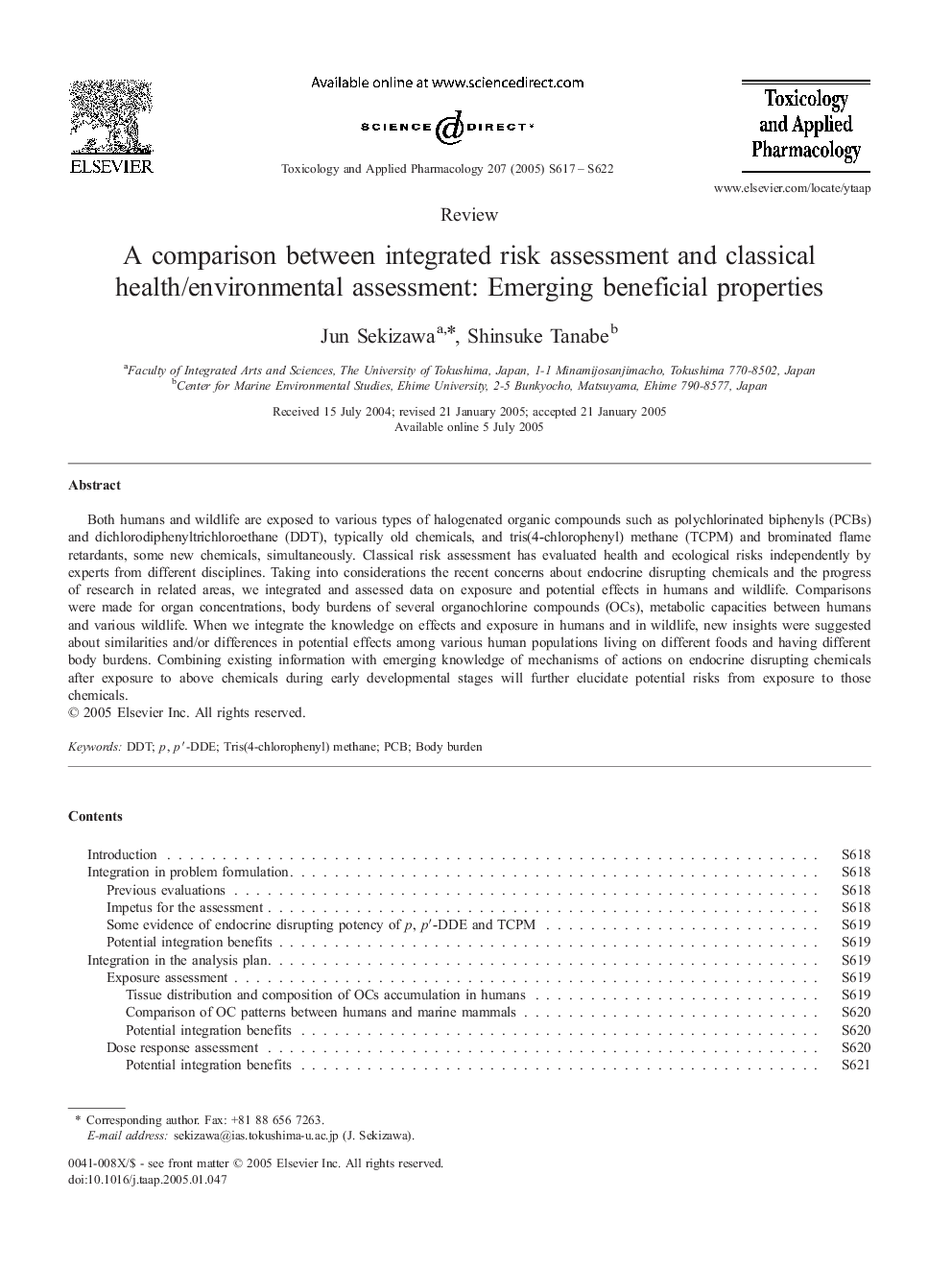| Article ID | Journal | Published Year | Pages | File Type |
|---|---|---|---|---|
| 9017801 | Toxicology and Applied Pharmacology | 2005 | 6 Pages |
Abstract
Both humans and wildlife are exposed to various types of halogenated organic compounds such as polychlorinated biphenyls (PCBs) and dichlorodiphenyltrichloroethane (DDT), typically old chemicals, and tris(4-chlorophenyl) methane (TCPM) and brominated flame retardants, some new chemicals, simultaneously. Classical risk assessment has evaluated health and ecological risks independently by experts from different disciplines. Taking into considerations the recent concerns about endocrine disrupting chemicals and the progress of research in related areas, we integrated and assessed data on exposure and potential effects in humans and wildlife. Comparisons were made for organ concentrations, body burdens of several organochlorine compounds (OCs), metabolic capacities between humans and various wildlife. When we integrate the knowledge on effects and exposure in humans and in wildlife, new insights were suggested about similarities and/or differences in potential effects among various human populations living on different foods and having different body burdens. Combining existing information with emerging knowledge of mechanisms of actions on endocrine disrupting chemicals after exposure to above chemicals during early developmental stages will further elucidate potential risks from exposure to those chemicals.
Keywords
Related Topics
Life Sciences
Environmental Science
Health, Toxicology and Mutagenesis
Authors
Jun Sekizawa, Shinsuke Tanabe,
